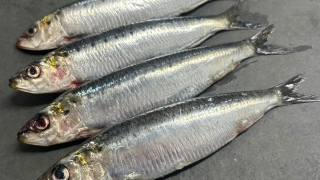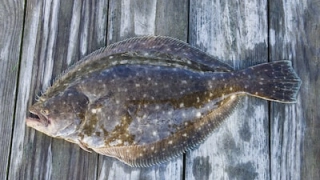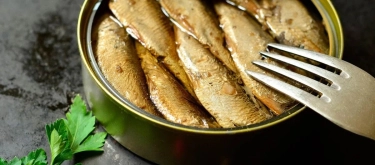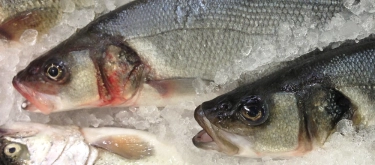Mackerel: Taste Profile, Aroma, Benefits and Health Risks
Mackerel is a flavorful, nutrient-rich oily fish celebrated worldwide for its distinctive taste, versatility, and significant nutritional benefits. Popular across European, Mediterranean, and Asian cuisines, mackerel is enjoyed grilled, smoked, pickled, or canned. Its deep, savory flavors and rich texture make it a prized ingredient, particularly prominent in Japanese, Scandinavian, and Mediterranean dishes.
Mackerel is a fish product, unsuitable for vegetarians, vegans, or individuals allergic to seafood. It is naturally gluten-free. Due to its oily nature and moderate mercury levels, individuals sensitive to mercury (e.g., pregnant women or young children) should consume it moderately. Proper cooking is essential to prevent foodborne illness.
What does Mackerel taste like?

Complete Sensory Description
Taste:
Mackerel offers a bold, rich, savory flavor with a pronounced oily character, complemented by mild sweetness and a subtle brininess. Its robust taste is balanced by inherent freshness, making it appealing to seafood enthusiasts who enjoy deep, satisfying flavor profiles.
Aroma:
Fresh mackerel has a mild, clean marine aroma. Cooking intensifies its fragrance, revealing rich, oily, appetizing scents with notes of caramelization, subtle smokiness, and gentle seafood aromas.
Texture:
Mackerel is tender, moist, flaky, and oily. Its soft flesh is naturally succulent, easily yielding to gentle cooking methods, making it ideal for grilling, smoking, or quick pan-searing.
Appearance:
Fresh mackerel exhibits attractive silvery-blue skin marked with distinctive stripes. Its flesh, darker and richer in color than white fish, turns opaque white or cream-colored upon cooking, accompanied by moist, flaky textures.
Varieties and Culinary Uses
-
Atlantic Mackerel:
Most common variety; robust flavor and oily texture, ideal for grilling, baking, smoking, or curing. -
King Mackerel:
Larger, meatier, stronger-tasting variety suitable for grilling, smoking, or incorporating into flavorful dishes. -
Spanish Mackerel:
Slightly milder flavor, ideal for grilling, pan-searing, or lighter seafood dishes.
In-depth Flavor Analysis
-
Richness and Oiliness:
Mackerel’s natural oil content contributes significantly to its flavor intensity, offering satisfying mouthfeel, richness, and exceptional savory depth. -
Subtle Sweetness and Brininess:
Subtle sweetness and gentle marine brininess provide balance, enhancing culinary appeal and creating harmonious flavor combinations. -
Flavor Development through Cooking:
Smoking, grilling, or roasting intensifies mackerel’s rich, savory qualities, adding smoky, caramelized notes and complexity. -
Flavor Evolution:
Cooking significantly transforms mackerel—initial boldness softens into harmonious, well-rounded flavors, enhancing culinary appeal with tender textures and delicious richness.
Culinary Applications
-
Grilling and Barbecuing:
Ideal preparation, enhancing rich flavors, crispy skin, and delicious smoky aromas. -
Smoked Mackerel:
Widely enjoyed as a delicacy or appetizer, served sliced, in salads, sandwiches, or charcuterie boards. -
Canned & Preserved Mackerel:
Convenient, nutritious choice for sandwiches, salads, pastas, or quick meal preparation. -
Asian & Mediterranean Cuisine:
Frequently used in Japanese sushi, sashimi, or grilled preparations; Mediterranean-style grilled or smoked mackerel salads.
Selection and Storage
Selecting Quality Mackerel:
- Fresh mackerel should have bright, clear eyes, shiny, moist skin, firm flesh, and mild ocean aroma.
- Avoid fish with cloudy eyes, dull skin, or strong, unpleasant odors, indicating spoilage or poor quality.
Storage Recommendations:
- Refrigerate fresh mackerel immediately at temperatures below 4°C (39°F), consuming within 1–2 days.
- For longer storage, freeze tightly wrapped mackerel and consume within 2–4 months for optimal freshness.

Nutritional Insights
-
Omega-3 Fatty Acids:
Rich source of heart-healthy omega-3 fatty acids, beneficial for cardiovascular health, brain function, inflammation reduction, and overall wellness. -
Protein-Rich:
Excellent dietary source of high-quality protein, essential amino acids for muscle growth, maintenance, and body functions. -
Vitamins and Minerals:
Contains significant amounts of vitamin D, vitamin B12, selenium, iodine, magnesium, and phosphorus, essential for bone health, immune function, neurological support, and metabolism. -
Caloric Density & Healthy Fats:
Mackerel is calorie-dense due to healthy fats, suitable for balanced, nutritious diets when consumed moderately.
Expert Insights & Culinary Tips
-
Optimal Cooking Methods:
Culinary experts recommend grilling, pan-searing, broiling, or smoking mackerel briefly to preserve moisture, tenderness, and enhance flavor. -
Flavor Pairings:
Mackerel pairs excellently with citrus, garlic, ginger, soy sauce, herbs (dill, parsley), capers, mustard, tomatoes, and smoky flavors, enhancing culinary depth and complexity. -
Avoiding Overcooking:
Short cooking times at medium heat preserve tenderness and optimal moisture content, enhancing taste and texture.
Interesting and Curious Facts
- Mackerel have been consumed in coastal communities for centuries, historically prized due to their abundance, culinary appeal, and nutritional benefits.
- In Japan, mackerel (saba) is commonly enjoyed as sushi or grilled with salt (Shioyaki), highlighting its importance in traditional cuisine.
- Northern European cuisines prominently feature smoked or pickled mackerel, reflecting cultural culinary traditions and long-standing seafood preservation techniques.
How to Enjoy Mackerel
- Grill or pan-sear fresh mackerel fillets with lemon, herbs, garlic, or spices for flavorful, quick meals.
- Enjoy smoked mackerel in salads, sandwiches, appetizers, or served simply with bread, pickles, and condiments.
- Incorporate canned or preserved mackerel into salads, pastas, or quick, nutritious dishes.
- Prepare Mediterranean or Asian-style mackerel dishes, pairing with seasonal vegetables, citrus, olives, or soy-based sauces.
Harm and Dietary Considerations
-
Mercury Levels:
Moderately high mercury content warrants cautious consumption for pregnant women, nursing mothers, and young children; moderate intake recommended. -
High Fat and Calories:
Calorie-dense due to natural oiliness; consume in moderation within balanced diets, particularly if managing cardiovascular health or weight control. -
Allergy Risks:
Avoid mackerel entirely if allergic to seafood due to potential allergic reactions.
Final Thoughts & Sensory Journey
Mackerel is a culinary treasure, celebrated for its robust, richly savory flavors, tender textures, and nutritional excellence. Its powerful umami and natural oiliness lend luxurious richness to dishes worldwide. Grilled, smoked, or simply prepared, mackerel promises delightful taste experiences, perfectly balancing nutritional benefits with memorable culinary enjoyment.
Resources
- McGee, H. (2004). On Food and Cooking: The Science and Lore of the Kitchen. Scribner.
- USDA FoodData Central (2023). Mackerel: Nutritional Information, Cooking and Safety Guidelines.
- Food and Agriculture Organization (FAO). (2021). Oily Fish: Health Benefits and Culinary Insights.











